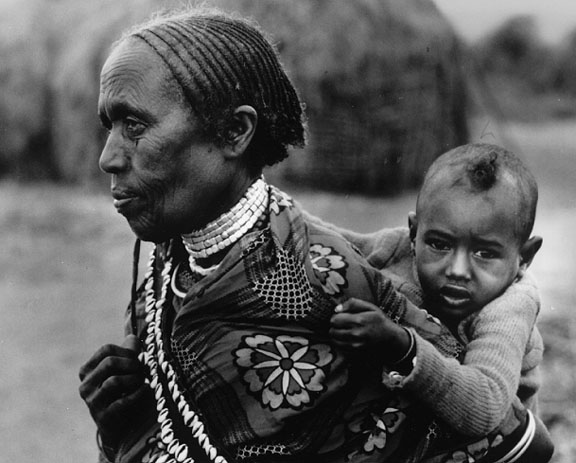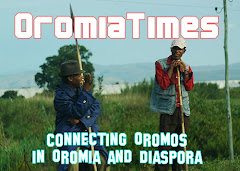Fayyis Oromia
 This is the issue raised by Gadaa.com, and we are invited to give our opinions. Here is my short view in to the future destiny of Oromia. I started to write in the cyber-world in 1999 as I observed Oromo nationalists in OLF fighting against each other based on the “different” Kaayyoo (goal) they envisioned for Oromo and Oromia. The Galaasa-group claimed to pursue Kaayyoo-ganamaa (original goal) and accused the Daawud-group for allegedly striving for “democratization of Ethiopia” instead of “decolonization of Oromia”. The Daawud-group, on other side, claimed to take the geopolitical situations into consideration and demanded “only self-determination” of the Oromo instead of the exclusive and explicit “Oromian independence.” The argument between the two views is still going on even though it is milder now than it was at the beginning of the OLF division.
This is the issue raised by Gadaa.com, and we are invited to give our opinions. Here is my short view in to the future destiny of Oromia. I started to write in the cyber-world in 1999 as I observed Oromo nationalists in OLF fighting against each other based on the “different” Kaayyoo (goal) they envisioned for Oromo and Oromia. The Galaasa-group claimed to pursue Kaayyoo-ganamaa (original goal) and accused the Daawud-group for allegedly striving for “democratization of Ethiopia” instead of “decolonization of Oromia”. The Daawud-group, on other side, claimed to take the geopolitical situations into consideration and demanded “only self-determination” of the Oromo instead of the exclusive and explicit “Oromian independence.” The argument between the two views is still going on even though it is milder now than it was at the beginning of the OLF division.I personally tried to show that there is no difference of Kaayyoo (END goal) per se between the two, but only difference of the way to it, i.e difference of Karaa (tooftaa). Here I don’t want to go into detail for it is already discussed adequately in my hitherto articles. But in short, I would like to say that the OLF mindset, which is leading Oromo nationalists individually or institutionally, has got two mid-term goals on the way of moving to our END-goal. As OLF was established in 1973, Oromo and Oromia were under complete Garbummaa (slavery). No question Oromo nationalists started this liberation movement to lead Oromo people to its END-destiny, i.e. to Bilisummaa (liberty of) the Oromo people and to Walabummaa (sovereignty of) the Oromo land.
The two mid-term goals, which are gradually found to be necessary in the process of the hitherto liberation struggle, are:
- the limited cultural autonomy in a partially designated present Oromia, which we could achieve till now. The OLF mindset in genuine and politically-conscious Oromo individuals doing their jobs being organized in the ruling party aka OPDO tries to keep this status.
- the complete cultural, economic and political autonomy of Oromia in the Ethiopian context, which seems to be more feasible to achieve in the near future. The OLF mindset operating in the opposition parties like OFC tries to achieve this.
When we look at the position of the three OLF factions nowadays, OLF-SG seems to support the move of OFC and then wants the Oromo public to decide on the issue of independence (within a union vs without a union of nations in the empire/region). The two main differences between OFC and OLF-SG are the fact that OFC struggles peacefully while OLF-SG uses armed struggle, and OFC uses the rhetoric of ‘unconditional Ethiopian unity’ while OLF-SG emphasizes the self-determination of the Oromo nation per referendum. The mindset in the other two OLF factions (OLF-KY and OLF-QC) as well as in the other liberation movements like COPLF and FIDO stresses the importance of an independent Oromia as an END-goal, and as far as I know they are not against the possible union with other liberated nations, that is why I don’t see where the difference of these groups is with the position of OLF-SG.
As I repeatedly put out, there is no contradiction between the Kaayyoo’s of all of these OLF mindsets which are only different rhetorically. The Oromo liberation movement is like a journey of a person from Djibouti (the symbol for Garbummaa) through Diredhawa (limited cultural autonomy) and through Adaama (complete political autonomy) to the END-destiny, Finfinne (the symbol for Bilisummaa, an independent Oromia within or without a necessary union based on self-determination per referendum). So, hopefully, the OLF mindset will synchronize the liberation movement in all organizations mentioned above to make them understand each other and to help them move from the status quo (the first mid-term) through the second mid-term to the final destiny.
Coming back to Gadaa.com’s initiative, let’s have a common new-year resolution for our destiny in the next decade. The last decade was, the decade of unproductive division of our liberation vanguard, OLF. I hope the next decade will be the decade of unity and merger among the three OLF factions and even including the other liberation organizations to forge only one very strong liberation front. Then, we can plan first to achieve a genuine self-administration in a form of Oromian autonomy, and then we can move together to self-determination per referendum to achieve Oromian independence, be it within or without a union based on our public’s verdict. By coordinating the struggle of OFC as an opposition and the struggle of the future only one OLF as an armed front, we can achieve our END-Kaayyoo (Bilisummaa Oromo and Walabummaa Oromia) in the next decade.
Whether being the member of UNO as only a nation-state Oromia or as a new union of liberated nations in the region in a form of supranational region-state is part of our goal will be decided by the public during self-determination per referendum. By the way, when we talk about union of liberated nations, it can be a union of only the oppressed nations, excluding the hitherto colonizer Abyssinia or it can be inclusive of the two Habehsa nations after they have accepted the God-given right of all oppressed nations to self-determination. Whether Habesha nations will be part of the union or not will also be decided by the public after a necessary debate and discussion. But, first Oromia and other oppressed nations must be independent from Abyssinian domination, and the two Habesha nations also need to be free from their colonial and dominating mentality. Our freedom from slavery and their freedom from being a colonizer are the two very essential prerequisites for the possible future union between Oromia and Abyssinia, if such a union is favoured by the respective public from both sides.
That is why, it would be nice if we plan to have Oromia as a member of UNO and then opt for the union of liberated nations when the time will be suitable and the public decide to have a supranational regional union instead of only national independence. In order to achieve this noble destiny of the next decade, we need the necessary instruments like Tokkummaa for Bilisummaa (unity for liberty), commitment, dedication, pragmatism, cooperation and coordination of our moves, etc. Otherwise, I know that Waaqayyo/Rabbii will help us, if and only if we help ourselves. So let’s now start to work towards this decade’s destiny envisioned by Gadaa.com.
Galatoomaa!!

















No comments:
Post a Comment